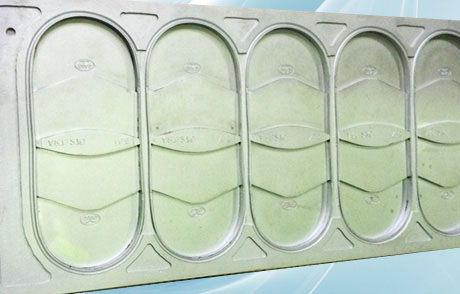Hard Chrome
What is it
The chrome-plating technique, better known as hard chrome plating (hard chromium), allows to obtain functional coatings of various thicknesses and considerable hardness that are resistant to wear and corrosion.
The hardness of the coatings of hard chromium is measured in Vickers or Knoop in compliance with ASTM E384, (Standard Test Method for Knoop and Vickers Hardness of Materials) the standard is about 1000 HV.
Hard chrome plating is very common in industrial application. Its characteristics are: oxidation, wear, abrasion and erosion resistance as well as a low coefficient of friction.
The structure of the electro-deposited chromium is responsible for the high hardness of the coating. Hard chrome plating is twice as hard as metals like iron, cobalt and nickel. It is even harder than hardened steel.
It ‘ also known that the properties of hardness and abrasion resistance of a deposit of hard chrome traveling parallel to each other that is not the case for the other metals.
Chromium’s natural color is white with bluish reflections. Its appearance may vary depending on the surface finish: from mirror-like to dull. The reflection coefficient of a clean chrome plated surface is 55% compared to a polished silver one. However, these reflective properties are retained even after a long-term exposure to the atmosphere while a silver coating will tarnished in a short time. Silver loses its reflective properties especially in environments reach in sulfur while chromium remains unchanged.
An important property of electroplated chromium is its low coefficient of friction. In particular, its dry friction coefficient is the lowest of all the metals.
A coating of at least 18-20µm shows an excellent corrosion protection that, because of its high resistance to abrasion, will last for a long time. To ensure against corrosion by gases is necessary to increase the deposition thickness to at least 30µm. Generally, a chromium deposit of about 30 µm gives adequate protection against atmospheric oxidation, while 50µm are required for protection against chemical agents.
A further property of chromium is its resistance to heat, making it ideal in situations of great mechanical and thermal stresses; for example in press tools, molds for glass, plastics or metals.
Hard chrome plating is also commonly use to recondition worn components and to improve parts that are subject to heavy use. Component such as: molds, rods, pipes, cylinders, etc., which are worn below minimum tolerances can be rebuild using chromium plating. This process can be applied even when parts are worn well below specs and can be repeated over and over. Every time the hardness of the surface is renewed increasing, at the same time, the life span of the part.
Technical specifications of our hard chrome coating
| Property | Value |
|---|---|
| Finish | Hard Chrome |
| Composition | Chrome metallic (zerovalent) |
| Crystal structure | Cubic body centered |
| Coefficient of linear expansion | 0.8 mm to 0 °C but |
| Thermal conductivity | 0.165 cal/cm² |
| Electrical resistivity | 43.8 micro-ohm/cm |
| Magnetic properties | Non magnetic |
| Hardness HV (0.05) | 1100 HV (DIN 50 359 /ISO 14577) |
| Young modulus | 235 GPa |
| Coefficient of friction (Chrome steel) | 0.17 |
| Coefficient of friction (Chrome on Chrome) | 0.14 |
| Deposition temperature | 60 °C |
| Maximum working temperature | 1000 °C |



